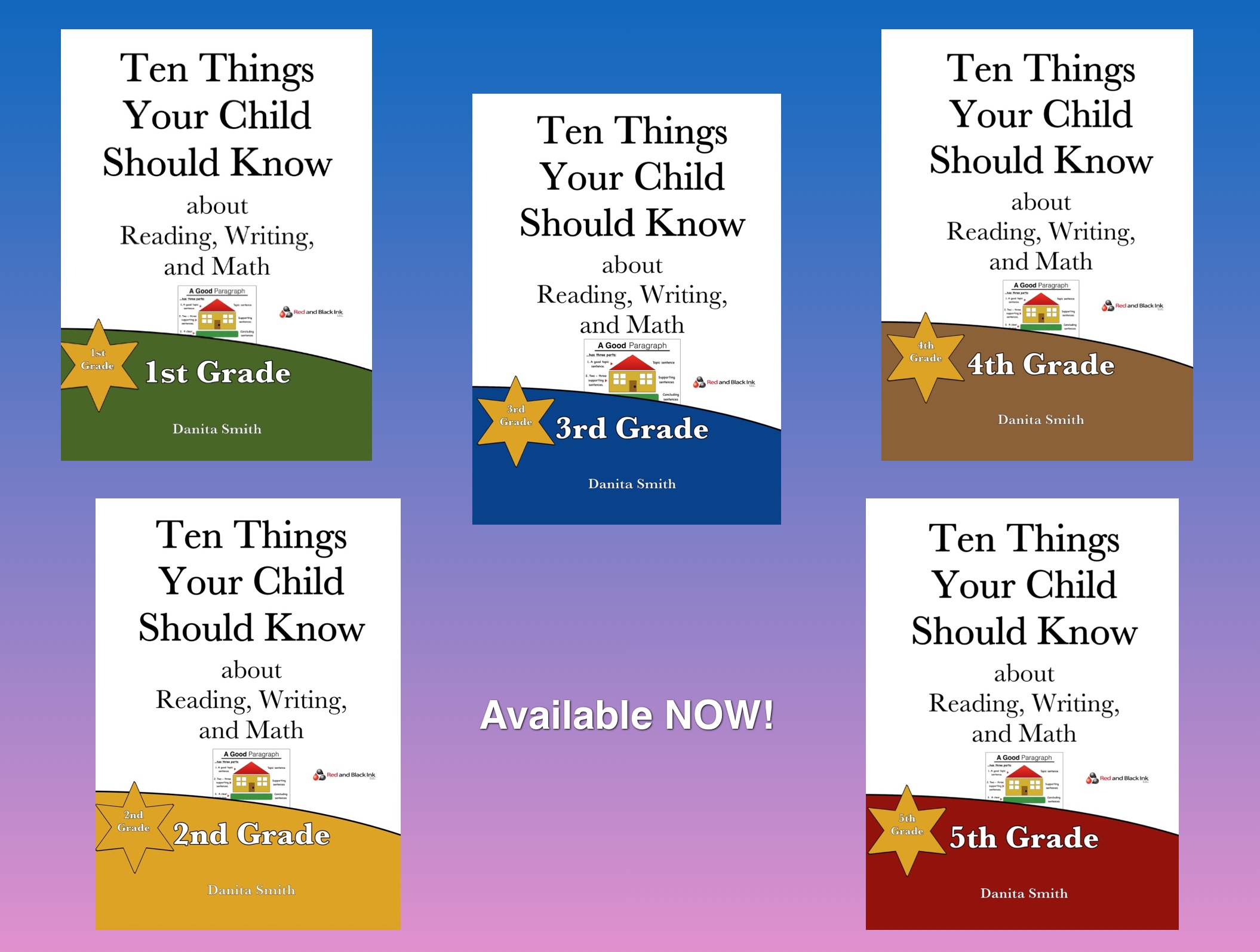Ten Things Your Child Should Know
(Book Series)
What if you could anticipate what your child might learn in future grades?
What if you could ask yourself a series of questions that would help you assess whether or not your child is learning key skills in reading, writing and math?
Read an excerpt below.
1st Grade Excerpt
Your child learned the alphabet and the sounds that correspond to the letters of the alphabet in kindergarten. She also learned how to read simple three-letter words and some sight words. In first grade, she should begin to learn about special rules that apply to reading. Rules that explain things such as what happens when you combine certain letters—what special sounds do they make? For example, “ike” makes a particular sound and can be used to make words like “bike,” “like,” and “pike.” As a matter of fact, adding an “e” to the end of many words makes a vowel say its long sound. For instance, “bit” becomes “bite,” “hat” becomes “hate,” “mop” becomes “mope.”
Other special sounds can be made when two consonants are put together, such as “th” and “sh.” They make sounds like the ones found in “that” and “shut.” The special sounds that letters make when combined can occur when consonants are combined together at the beginning of words (“chop”) or at the end of words (“rich”) or when vowels are combined (“shoe” and “too”). When two letters are combined to make one sound it is called a digraph. Thus more emphasis will be put on combining letters together to make different words.
Your child will learn what certain root words sound like when common endings are added to them, such as “ed,” “ing,” “s,” etc. “Walk” can become “walked,” “walking,” or “walks.”
So your child is likely to:
Review the short sounds of the vowels, a, e, i, o, and u, in words like “mat,” “bet,” “sit,” “top,” and “cup.”
Learn the long sounds of these vowels in words like “make,” “eat,” “site,” “rope,” and “mute.”
Learn that “y” can sometimes be used as a vowel in words like “baby” and “sky.”
Learn that two letters can be combined together to make one sound; these are called digraphs.
(Some examples of consonant digraphs are “ch,” “sh,” “th,” “wh,” “ph,” “ck,” “mb,” “kn,” etc... Words like “that,” “phone,” “where,” “comb,” and “know” all have digraphs in them.)
(Some examples of vowel digraphs are “ai,” “ay,” “ee,” “ey,” “oa,” “oo,” “oy,” etc... Words like “sail,” “say,” “feet,” “hey,” “boat,” and “boy” all have digraphs in them.)
Learn that some vowels change their sound slightly when “r” comes after them. For instance, the letter “a” makes its short and long sounds like the sounds it makes in the words “apple” or “ape.” Yet when “r” comes after it, in certain words the sound that “a” makes changes, as in the words “car” or “star.” The same is true for words like “sir,” “stir,” “her,” “for,” and “fur.” Your child will have to get use to pronouncing words where “r” affects the sound of a vowel.
Learn that other groupings of letters such as “igh” and “ike” make certain sounds like those contained in the words “sigh” and “like.”
Learn about compound words, which are words made up of two separate words like “cupcake” and “sunset.”
Learn how to add special endings onto root words. For example, “look” can become “looking,” “looks,” or “looked.”
Learn a little bit about syllables, which represent the number of sounds (usually vowel sounds) you can hear in a word. For instance, “boring” has two syllables: bor – ing.
Your child may or may not learn all of this in the first grade, some of it may carry over into second grade, but it is important that you understand that all of these things will eventually be taught in order to help your child learn how to read.
Sample List of Skills for You to Examine
My child can read words that have common consonant blends like “dr,” “sh,” “ch,” “fl,” “bl,” etc. and words like “drop,” “shut,” “chip,” “flat,” “blot,” etc.
My child can read words with common patterns such as “ike,” “ate,” “ite,” etc. and words such as “bike,” “late,” “site,” etc.
My child has increased the amount of sight words he or she is able to read….words such as “they,” “them,” that,” “where,” “when,” “why,” “what,” “down,” “up,” etc.
Etc.
